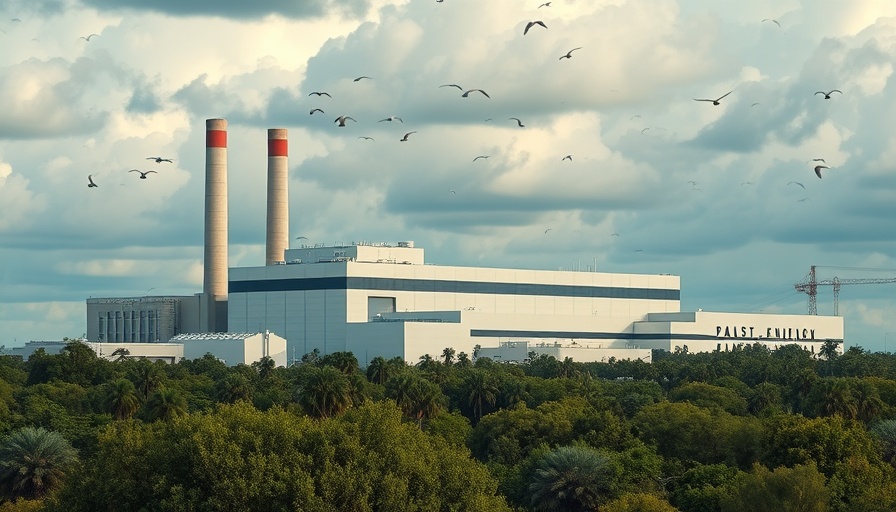
Unprecedented Growth Demands Innovative Solutions in Waste Management
Palm Beach County, Florida, is making significant strides in addressing the challenges posed by its rapidly growing population. The approval of a $1.5 billion plan for a second waste-to-energy incineration facility is a crucial response to population projections that anticipate an increase to 1.8 million residents by 2050. This growth is expected to result in nearly 3 million tons of waste annually by 2045, further heightening the necessity for modern waste management solutions.
Transitioning from Old to New: The Shift in Waste Processing Technology
The new facility, dubbed Renewable Energy Facility 2 (REF2), aims not just to replace the aging Renewable Energy Facility 1 (REF1), which has served the county since 1989, but also to enhance the county’s overall incineration capacity significantly. This state-of-the-art plant will process around a million tons of municipal solid waste each year, generating enough electricity to power approximately 90,000 homes. Environmental advocates argue that the facility is essential not only for waste management but also for reducing greenhouse gas emissions by keeping waste out of landfills.
Cost-Benefit Insights for Business Owners and Developers
As facility management costs are expected to rise for homeowners, understanding the projected costs is vital for business owners and property developers in the region. According to Palm Beach County Solid Waste Authority officials, the costs for single-family homeowners will start at about $264 annually in 2032 and may increase to $324 by 2046. How businesses plan for these anticipated expenses can significantly impact their long-term financial strategies.
The Role of Waste-to-Energy in Sustainable Development
Palm Beach County’s first waste-to-energy facility, REF2, serves as an example of how renewable energy can be effectively harnessed from waste. By converting waste into energy, this facility not only diminishes the volume of material sent to landfills by 90% but also contributes to local renewable energy generation. This transition could motivate other counties in Florida, like Miami-Dade and Broward, to explore similar advancements in their waste management approaches.
Future Challenges: Regulatory and Community Pushback
Despite the promising aspects of the new facility, opposition remains from some environmental advocates who raise concerns about potential air emissions. As the facility gears up for construction, understanding the local impact and ensuring compliance with Environmental Protection Agency (EPA) regulations will be critical to overcoming these challenges. This regulatory scrutiny could affect operational timelines and community acceptance, factors that local businesses and developers should monitor closely as they strategize their future investments.
In conclusion, Palm Beach County's decision to advance its waste management infrastructure with the new $1.5 billion waste-to-energy facility serves as a testament to its commitment toward sustainable practices and economic growth. For stakeholders interested in this evolving landscape, proactive engagement in community discussions and keeping an eye on regulatory developments will be essential as Palm Beach navigates its course towards a greener future.
 Add Row
Add Row  Add
Add 




Write A Comment